Personalize your PC
Wednesday, February 25, 2009
Download Windows 7 Themes and Wallpapers from Microsoft
Personalize your PC
Apple Safari 4 beta - not for Windows 7
Apple Safari 4 beta (link 1)
Apple Safari 4 beta (link 2)
Microsoft test updates in Windows 7 Beta 7000 Today
Ballmer: Office 14 will not be released in 2009
Microsoft's Ballmer outlines his seven big bets for 2009
Wednesday, February 18, 2009
There's a Reason for Windows 7's Name
But Microsoft has a problem with bloggers, competitors, critics, enthusiasts and journalists. The majority tend to use shorthand. Windows gets dropped from XP or Vista. The brand impact diminishes. Vista isn't the same as Windows Vista.
Writers are taught not to leave numbers hanging, and if they did there would be confusion with something else. Who refers to Windows 95 as 95, or Windows 2000 as 2000? Nobody. By choosing Windows 7, Microsoft compels more people to use Windows as part of the product name. Always. This reinforces the Windows brand, something Microsoft wants to do if for no other reason than distance from shorthand Vista.
But there are positive brand reasons for the naming, too, particularly as Microsoft puts more emphasis on Windows as the brand identity. From a purely marketing perspective, it is better for Microsoft if most references are Windows 7.
I'm a real pain in the ass because I continue using shorthand. I often use Seven to refer to Windows 7. But Microsoft could even gain from pests like me. Companies can come to control single words to a marketing advantage. In a November Advertising Age article, Al Ries explained how the Barack Obama campaign came to own "change." He writes:
Look at what 'driving' has done for BMW. Are there vehicles that are more fun to drive than BMWs? Probably, but it doesn't matter. BMW has pre-empted the 'driving' position in the mind. The sad fact is that there are only a few dozen brands that own a word in the mind and most of them don't even use their words as slogans. Mercedes-Benz owns 'prestige,' but doesn't use the word as a slogan. Toyota owns 'reliability,' but doesn't use the word as a slogan.
Could Microsoft come to command "Seven," or, better, "7" as a marketing word? How about "lucky 7" as an alternative? Probably not, is the likely answer. The marketing word Microsoft wants to own, or at least to restore, is "Windows." The phrase it wants to own, like Coke with "the real thing" or Pepsi's "the Pepsi generation," is "I'm a PC."
The "I'm a PC" association would be guerrilla marketing as it's meant to be, and Microsoft would get a delicious victory. Marketing ownership belonged to Apple, from the phrase "Hello, I'm a PC. And I'm a Mac." Revenge is a dish served cold, right?
Presumably Microsoft marketers have figured all this naming stuff out just like I've blogged. If not, they got lucky.
Microsoft's 10 Unlucky Breaks
More recently, Microsoft hasn't been so lucky. Since the mid-1990s, the company has stumbled a few times and been unlucky even more often. Recent unluckiness is so great, I had a really hard time whittling down this list to just 10 items. I consulted the independent analysts at Directions on Microsoft for their advice; these guys have followed Microsoft since 1992, and some of the analysts are former employees.
The list is by no means comprehensive, and to some people may seem somewhat arbitrary. Well, yeah, there were just so many unlucky breaks to choose from. My list is unlucky breaks with monumental impact on the company—past, present and future. I encourage you to offer your own list of unlucky breaks in the comments or by e-mail.
Microsoft's unlucky breaks are in order of descending importance, with No. 1 being most significant and No. 10 the least.
10. Windows XP launch. The shocking Sept. 11, 2001, terrorist attacks against the United States affected Microsoft in a quite unexpected way. The company had already planned a late October launch of Windows XP in, of all places, New York. The timing and venue meant that Microsoft had to do a subdued launch event. How could Microsoft get all rah-rah about Windows XP with the American psyche still in state of shock?
Not only the launch event, Windows XP marketing was somewhat subdued, too. As the true inheritor of the Windows 95 legacy—a Microsoft operating system for businesses and consumers—Windows XP should have launched with blow-out marketing.
9. Stock doldrums. Microsoft's share price peaked at around $58 in December 1999, and it has not gone much of anywhere since. A year later, share price fell to around $21. There were a few rises—$36.50 (June 2001) and $36.81 (October 2007)—but generally shares have traded below $30. Microsoft shares closed at $19.26 yesterday.
Meanwhile, some competitors have profited nicely. Apple shares rose from about $7 in April 2003 to around $190 in Oct. 2007. Following some turbulence, Apple shares pushed back up to around $174 in August 2008, before beginning a steep decline tracking the global economic crisis. Shares closed at $99.27 yesterday. Google is another example. Shares rose from about $100 in August 2004 to a more than $740 peak in November 2007. The global economic crisis plowed Google shares, which fell to less than $250 a year later. Google closed at $363.05 yesterday.
Microsoft isn't alone in the stock price doldrums. Oracle, Novell, Sun and many other software companies have seen shares decline or seemingly go nowhere up during the 2000s. For Microsoft, the share price leads to negative perceptions about the company's value and future growth capabilities. I'm not an investor, and won't be as long as my profession is journalism. But if I invested, Microsoft wouldn't seem all that attractive, which really is strange. Microsoft sells products that most people use. A company with such reach and consistently increasing revenues and profits should be valuable to investors. There's a perception that Microsoft isn't a growth company, so the shares go nowhere. It's bad luck.
8. Passing on YouTube. In October 2006, Google announced the acquisition of YouTube for $1.6 billion. Six months earlier, Microsoft CEO Steve Ballmer passed on buying the video startup for about $500 million. He chose to build rather than buy. Microsoft built MSN Soapbox, which has gone nowhere. Meanwhile, YouTube has led to an explosion in online video content and consumption.
In December, U.S. Internet users viewed more than 14 billion videos, according to ComScore. Google's share of videos watched was 41 percent, compared with 1.7 percent for Microsoft. YouTube accounted for 99 percent of the videos watched at Google sites. About 150 million Americans watched videos online in December for an average of 96 per viewer. Google had more than 100 million unique viewers, with an average of 59 videos per viewers. By comparison, Microsoft had 29.5 million viewers, with an average of 8.4 per viewer.
Something else: If ComScore ranked YouTube as a search engine, the video sharing site would be No. 2, ahead of Yahoo. If ComScore tracked Google and YouTube as a single entity, the video sharing site would account for one-quarter of searches.
I debated about putting this one on the list. Was it an unlucky break or sheer stupidity that Microsoft let YouTube get away? Whichever, YouTube's popularity is explosive at the right time—when more people are watching videos online and not just from PCs. They're using mobile phones, too. Maybe it was bad luck. Steve had indigestion, and it led to a bad decision.
7. Linus Torvalds develops Linux. Linus didn't set out to popularize the free software moment, but that's the eventual outcome of his developing the Linux kernel in 1991. Linus would later publish Linux under a GNU Public License, whose origins date back to the mid-1980s and free-software activist Richard Stallman.
Microsoft co-founder Bill Gates took a stance against free software in his "An Open Letter to Hobbyists," published in the Feb. 3, 1976, Homebrew Computer Club Newsletter. The letter admonished other software developers for reusing code created by others and laid intellectual property concepts Microsoft would later adopt. Linus' work was bad luck for Bill.
Open-source software consistently causes sales problems for Microsoft. The problem is bigger than customers switching to Linux. Customers threatening to switch may get extra discounts, which is still lost revenue to Microsoft. Linux's success, while arguably limited compared with Windows, anchors the open-source movement and energizes the fervent anti-Microsoft community. Open-source gains in Europe foster anti-Microsoft sentiments there and almost certainly have contributed to ongoing antitrust problems on the Continent.
6. Apple's May and October surprises. The year 2001 should have been great for Microsoft, with the release of new Office and Windows versions. But the year was greater for Apple, which through three seemingly small events kicked off pebbles that later set off an avalanche.
In March, Apple released Mac OS X and again in September with the 10.1 upgrade. In May, the first two Apple retail stores opened in California and Virginia. In October, the first iPod shipped. From these three 2001 happenings, Apple's brand and market share revival started small before reaching a crescendo in 2007 and 2008.
Mac OS X proved to be a rock-solid competitor to Windows XP and, later, Vista. Apple offered XP-wary PC users something different and with lower malware risk. The retail stores exposed Apple products and brand to millions more people than had ever seen them in places like Circuit City or CompUSA. The stores also promoted a Mac lifestyle. Apple Store Genius Bars also offered an important point of customer technical support and satisfaction.
The iPod would derail Microsoft's Windows Media strategy. The company had banked on Windows Media DRM and media streaming capabilities built into Windows Server to woo content providers. But the iPod didn't support Windows Media, which would come to matter two-and-a-half years later when device sales greatly increased, along with those from the iTunes Store. It would be Apple, and not Microsoft, that would come to be the biggest distributor of DRM content.
Folklore has it that bad luck comes in threes.
5. Windows Vista. If there were a blueprint for product development disaster, Windows Vista would be it. The operating system seems to have been jinxed with bad luck from the very start:
- Microsoft made big feature promises, including the ill-fated WinFS, that couldn't be kept.
- The Vista project, then called Longhorn, ran aground in 2004. Developers started from scratch with Windows Server source code.
- Repeated delays led to disaster: Microsoft missed Christmas 2006. Vista shipped in late January 2007.
- Vista proved to be incompatible with enterprise software and demanded newer hardware to run. Oh, yeah, many drivers weren't supported either.
- Microsoft targeted Vista for high-powered systems, but many users bought less powerful notebooks as the market shifted from desktops. Vista demanded too much from many notebooks and netbooks.
- Reviewers panned the operating system, and businesses shunned it. Enterprise Vista adoption was a mere 10 percent at the end of 2008.
No Microsoft competitor could have launched an anti-marketing campaign as effective as Windows Vista. The operating system damaged Microsoft's brand and the company's credibility with customers, particularly businesses.
4. The Google economy. Google's success isn't its oft-hyped search algorithm, but how the company succeeded at the search advertising business pioneered by Overture. Finally, somebody figured out how to generate real revenue from the Web.
Google's platform is characteristically like Windows. There are APIs, developers and third parties profiting from the platform. It's bad luck that Google is so much more than a search engine.
Like Microsoft undercut competitors such as IBM in the 1980s and 1990s, so Google is doing to Microsoft. Microsoft could effectively bundle and integrate technologies into Windows because the company and its partners made money from the platform. Similarly, Google can give away technologies Microsoft must charge for. Advertising from Google's platform subsidizes the products and services. Google is a threat to Microsoft because it's a true platform competitor.
Google's platform is expanding, by way of the Android mobile OS and the Chrome browser. The time is quickly coming when Google will directly compete with Windows—it's already happening on mobile phones. Why not netbooks?
3. September 2008 economic crisis. During earnings announced in late October, Microsoft executives warned of a major dip in software sales, starting in mid-September. When Microsoft next announced earnings, the news was grimmer: Sales collapsed in December. The situation had become so unpredictable that Microsoft offered no revenue or operating income forecasts for the remainder of fiscal 2009, ending on June 30. Already, Windows revenues were down 8 percent year over year during Microsoft's fiscal second quarter; profits fell by 13 percent.
Global economic gloom is bad luck for pretty much everybody. But Microsoft has unique exposure. Annuity licensing contracts soften the blow because of billions of dollars of unearned revenue that Microsoft can amortize over time. That said, Microsoft is in a unique position of misery. Among various companies, cutbacks here, layoffs there, bankruptcies elsewhere will have limited impact on technology and other suppliers. Microsoft's products are used everywhere, so the potential sales harm is greater.
Whenever companies close, cut back or lay off, Microsoft loses something. In the past 13 months, the U.S. economy has shed 3.6 million jobs. With many of those jobs go people who had used Microsoft software. Because of Microsoft's cross-product integration strategy, each worker represents much either now or in future sales. One worker might represent licenses for Windows Vista Enterprise, Office Enterprise and Dynamics CRM, and client-access licenses for BizTalk Server, Communications Server Excel services, Exchange Server, SharePoint Server and Windows Server. Microsoft's good luck when businesses were buying is looking like really bad luck when they're not.
2. The United States vs. Microsoft. The May 1998 antitrust case left deep scars on Microsoft, and forever damaged the company's image. Microsoft carries the stigma of convicted monopolist. During the trial, government prosecutors played video depositions of a testy Bill Gates rocking back and forth. The depositions weren't taken to be shown in court, but the presiding judge allowed them there.
The judge broke his ruling into two parts, released in November 1999 and April 2000. He found that Microsoft had committed about 20 antitrust violations, and he ordered that the company be broken up into two separate entities. Microsoft would later avoid breakup, but a remedy trial kept the case alive and in the news until November 2002. Bad luck: U.S. government oversight of Microsoft was extended two years from November 2007.
The U.S. antitrust case led to more than 100 other lawsuits, most of which Microsoft settled. Dissatisfaction with the outcome here spurred on competitors and antitrust investigators in Europe. In March 2004, the European Union's Competition Commission found that Microsoft violated local antitrust laws. An appeals court would later agree. Since the ruling, the European Competition has fined Microsoft and launched two other antitrust investigations.
The damage to Microsoft is simply incalculable.
1. World Wide Web. It was bad luck that Microsoft executives were looking the wrong way when:
- Tim Berners-Lee created the first Web server in 1990.
- University of Illinois students developed the Mosaic browser in 1992.
- Netscape released the first commercial Web browser in 1994.
Tim developed the World Wide Web using open or accepted standards outside of Microsoft's control. The Web shifted informational, software developmental and computing relevance away from Windows computers to Web browsers and servers. Tim's work caught Microsoft unprepared.
IBM dominated information during the mainframe era. Microsoft claimed informational dominance during the PC era, particularly through proprietary, binary file formats. The Web is Microsoft's big problem, and it's growing larger as Google and other Web platform companies exercise more control over information. The promise to end users: informational access anytime, anywhere and on anything. No Windows required.
Bill Gates fairly accurately defined Microsoft's problem in the May 1995 "Internet Tidal Wave" letter. It's a blueprint for how Microsoft should have fought back against the informational liberation started by Tim Berners-Lee. The letter is also a blueprint for how companies like Google can more effectively compete with Microsoft.
Microsoft can't put the Internet genie back in its bottle. Too alluring is the promise of anytime, anywhere informational access on any device, with no Windows required. Microsoft continues to fight for control, trying to pull informational relevance back to the desktop through products like Office System and SharePoint Server. Microsoft can't succeed. The mobile phone and Web browser is the killer combination that will eventually undo Microsoft's desktop hegemony. What bad luck.
[Please send your tips or rumors to watchtips at live.com].Start Windows
The last major iteration of the concept came in April 2005, when Microsoft kicked off the 18-month "Start Something" Windows XP ad campaign. The newer Start concept is threefold:
- Marketing—new Windows Phones promotionals feature Start Windows, with the logo between the words.
- Software—Windows Mobile 6.5 puts new emphasis on the Start icon.
- Hardware—Windows Phones will feature a Start button.
I've long advocated that good marketing must be affirmative, empowering and aspirational. People want to know how Product X, Y or Z will make their lives better—why they will be happier for their purchase. The 95-second video embedded below focuses almost wholly on user benefits; Microsoft forgoes the features. Here, here, that's exactly the right approach.
It's a great, ah, start to the video: "Start discovering"; "Start experiencing"; "Start remembering"; "Start succeeding." I'll be watching to see how the Start manifests in Windows and Windows Live marketing. Microsoft is more closely coordinating marketing among the three products.
source: microsoft-watch.com
Wednesday, February 11, 2009
Top 5 must-have desktop Gadgets for Windows 7
Windows 7 Beta has been out for a while now and my take on it is that it is fast, stable and it gives more intriguing experience than any of its predecessors. 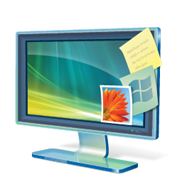
Among many changes, Microsoft has changed the way how Windows handles Gadgets on the desktop. In Windows Vista, Sidebar provided a containing environment which hosted mini-apps built using XML, DHTML and JavaScript. Now starting with Windows 7, Windows Sidebar is no longer required to run gadgets as these mini DHTML based apps can now be placed directly on the desktop without having to have Windows Sidebar running.
I have been fond of using gadgets ever since their inception in Windows Vista. With the right gadgets, you can get things done quickly and easily. Unfortunately the development of quality Gadgets has been real slow. Microsoft is to be blamed for this. The story would have been much different had Microsoft added support for Gadgets development in Visual Studio with a drag-and-drop interface. Now since there isn’t any free quality tool out there for Gadgets development, it is very difficult to find quality gadgets from third parties. Adding insult to injury, Windows 7 Beta includes only one new gadget which is for Media Center. All other gadgets included in Windows 7 are from Windows Vista’s era.
Without going into any further delays, here is my pick for the top 5 must-have Gadgets for Windows 7. Of coarse I use Gadgets other than the ones I have listed below but they are too obvious and common so I haven’t included them in my list:
Twadget (The Twitter Gadget)
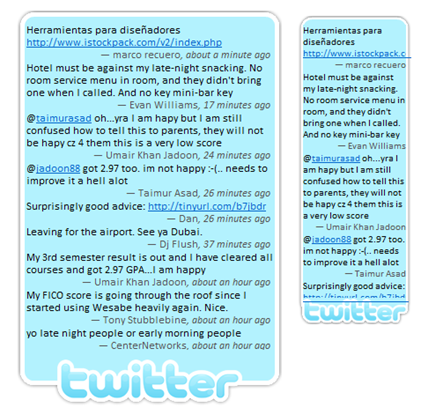 I’ve become a regular user of Twitter over the last couple of months, both on the desktop and on the iPhone. Today I’ve discovered Twadget which looks like another great option for Windows (Vista & 7 only) users. I simply love this gadget. Twadget lets you do basic twitter tasks like sending and viewing all the tweets from your friends right from your desktop. If you’re one of those who use Twitter regularly, Twadget is for you! You can download it from here or download the complete Gadgets Pack here.
I’ve become a regular user of Twitter over the last couple of months, both on the desktop and on the iPhone. Today I’ve discovered Twadget which looks like another great option for Windows (Vista & 7 only) users. I simply love this gadget. Twadget lets you do basic twitter tasks like sending and viewing all the tweets from your friends right from your desktop. If you’re one of those who use Twitter regularly, Twadget is for you! You can download it from here or download the complete Gadgets Pack here.
Remote Desktop Gadget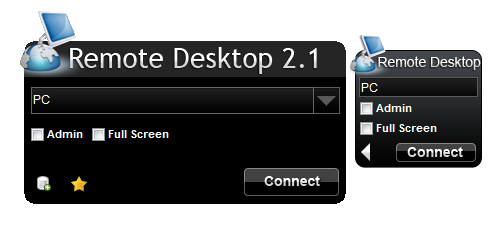
Remote Desktop Gadget enables Windows users to remotely connect to other computers in their network right from the privilege of their desktop. It uses Remote Desktop Connection client on Windows to achieve remote desktop computing. It is simple and acts as a great extension to Microsoft Remote Desktop Connection client. Click here to download it.
Blue Calendar Gadget for Windows 7
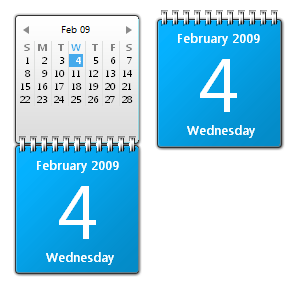
“rapha2” over at DeviantArt has modified the original Microsoft calendar gadget to make it blue in color. This new blue calendar gadget matches the cool bluish-wavy look of Windows 7. This gadget can be downloaded from here or you can download the complete Gadgets Pack here.
Windows Live ‘What’s New’ Gadget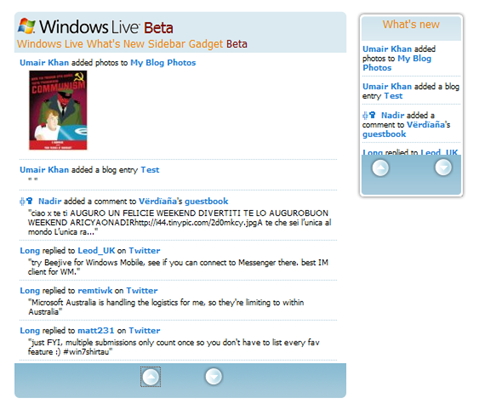
With Windows Live ‘What’s New’ gadget, you can get all the latest updates from Windows Live and other web activities of your network.
The Windows Live What’s New Sidebar Gadget (Beta) is a Vista gadget that displays your Windows Live “What’s New” feed on your desktop. You can receive real-time updates on what your friends are doing across multiple social networks right from your desktop. Be the first to know when your friends upload photos, add new friends to their networks, change their status messages and post comments. It’s quick and easy to add the Windows Live What’s New Sidebar Gadget (Beta).
Surely Windows Live team could have done a better job on the looks. This gadget isn’t pretty but it does the job well, displaying all the feed items including thumbnail images from Windows Live Home. Download it from Windows Live Gallery or download the complete Gadgets Pack here.
Simple Search Bar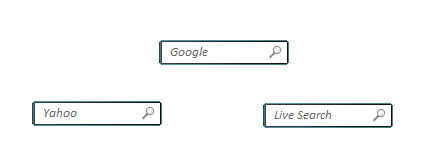 As the name implies, this search gadget is truly the most simple & clean search gadget out there which lets you search the web using Google, Yahoo and Live Search. Download it from Windows Live Gallery or download the complete Gadgets Pack here.
As the name implies, this search gadget is truly the most simple & clean search gadget out there which lets you search the web using Google, Yahoo and Live Search. Download it from Windows Live Gallery or download the complete Gadgets Pack here.
Windows 7 buzz may stall Vista
And it's not like there has been a mad rush on that front to begin with.
Gartner did a survey in October that found about 30 percent of large businesses were likely to skip Vista and a significant number of other companies still hadn't decided what to do.
Plaudits for Windows 7, combined with a weakening economy, could mean that as many as half of businesses decide to skip Vista entirely, according to Gartner analyst Michael Silver.
"Anyone who was on the fence... is now pretty much likely to skip," Silver said Wednesday.
That's made things rough for those inside Microsoft whose job it is to advise businesses on their Windows upgrades. Microsoft isn't necessarily trying to discourage businesses from going from XP to 7 (an upgrade is an upgrade after all). But, the company is offering a couple of warnings.
"They are incredibly excited (about Windows 7)," says Gavriella Schuster, a senior director in the Windows unit. "We're just trying to temper that...so they are very realistic."
Although Windows 7 is getting strong early marks, it isn't a panacea for all of Vista's pain, Schuster said. Businesses have to work through the same application compatibility issues to go from XP to Windows 7 as they would to move from XP to Vista. Although Windows 7 is designed to be highly compatible with Windows Vista, all of the things that have made going from XP to Vista a challenge for businesses are also present when going from XP to Windows 7.
source: news.cnet.com
Monday, February 9, 2009
Enable Multiple Concurrent Remote Desktop Connections or Sessions in Windows XP
Whenever there is a remote user who user Remote Desktop Connection (RDC) client to connect to a Windows XP host, the local user is disconnected with the local console screen locked, with or without his or her permission. Remote Desktop, unlike Terminal Server Services in Windows 2000, Server 2003 and Server 2008, is designed for single user use only, no matter it’s local or remote user.
Here’s a hack to unlock the single user limitation and enable multiple concurrent remote desktop connection sessions support in Windows XP Professional and Media Center Edition, using a either a patched termserv.dll or old patched cracked termserv.dll build version version 5.1.2600.2055, so that unlimited users can simultaneously connect to a computer via Remote Desktop.
1. Download a copy of patched termsrv.dll (in ZIP file) which has the Remote Desktop connection limitation deactivated for your version of Windows XP:
Windows XP RTM, SP1 and SP2: termsrv.dll (version 5.1.2600.2055)
Windows XP SP2: termsrv.dll (version 5.1.2600.2180)
Windows XP SP3: termsrv.dll (version 5.1.2600.5512)
For information, the termsrv.dll patch normally has the following HEX code bits overwritten with following value:
00022A17: 74 75
00022A69: 7F 90
00022A6A: 16 90
2. Restart the computer and boot info Safe Mode by pressing F8 during initial boot up and select Safe Mode. This step is only required if you’re currently running Windows Terminal Services or Remote Desktop service, and System File Protection has to be skipped and bypassed, else it will prompt the following error message to restore the original termsrv.dll.
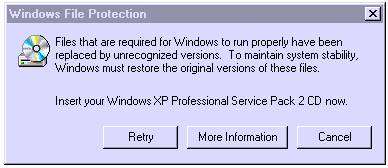
read more...
Trick to Enable and Allow Windows XP and Vista Remote Desktop Login Without Password (or With Blank Null Password)
Your credentials did not work.
or,
Unable to log you on because of an account restriction.
By default, Windows XP and Windows Vista does not allow nor permit user account without password set or user name with blank (null) password to connect and log in remotely via Remote Desktop Protocol (RDP).
The obvious resolution is definitely to create and set a password for the user account that requires to logon remotely to a computer via Remote Desktop, and it’s recommended for security reason too. However, user who for some reason such as for the purpose of convenient, and thus unable or cannot assign a password to the user account, can use the following workaround to allow user to login remotely via Remote Desktop Connection (RDP) client to Windows XP and Windows Vista PC.
How to Enable Remote Login via Blank Passwords using Local Security Policy or Group Policy Editor
The configuration to enable null (blank) passwords logon must be done on the host computer, i.e. the remote computer to remotely controlled. To configure the Remote Desktop host computer to accept user name with blank password, go to Control Panel -> Administrative Tools (Under System and Maintenance in Windows Vista) -> Local Security Policy. Alternatively, run GPEdit.msc (Group Policy Editor).
Then, expand Security Policies -> Local Securities -> Security Options (for user using Group Policy Editor or GPEdit.msc, expand Local Computer Policy -> Computer Configuration -> Windows Settings -> Security Settings -> Local Policies -> Security Options). Locate Accounts: Limit local account use of blank passwords to console logon only policy, and set its value to Disabled.



Allow Remote Desktop Connection via User with Blank Passwords
Once disabled, user account with blank or null passwords can now login remotely instead of just able to do so via local console.
How to Configure Blank Passwords Allowed for Remote Log On via Registry
Windows XP and Windows Vista stores the value of the policy set above in a registry key named “LimitBlankPasswordUse”. To unlock the limitation of cannot establish Remote Desktop logon with user account without a password, simply set the value data for LimitBlankPasswordUse to 0 (so that there is no limit on blank or null password use), as according to the code below. Alternatively, copy and paste the following text to a text file, and save with a .reg extension. Then run the .reg file to merge the value to registry.
Windows Registry Editor Version 5.00
[HKEY_LOCAL_MACHINE\SYSTEM\ControlSet001\Control\Lsa]
“LimitBlankPasswordUse”=dword:00000000
[HKEY_LOCAL_MACHINE\SYSTEM\CurrentControlSet\Control\Lsa]
“LimitBlankPasswordUse”=dword:00000000
For convenient, two registry files have been created and available for free download, which will enable or disable usage of blank password (or absent of password) to login remotely. Download BlankPasswords.zip and run EnableBlankPasswords.reg to enable or DisableBlankPasswords.reg to disable remote login via blank password.
The trick works on both 32-bit and 64-bit operating systems.
How to Install and Enable Remote Desktop in Windows XP Home Edition
Note that if you just want to be able to remote control the desktop of the computer running on Windows XP Home Edition, it may be easier and wiser to use the free VNC as alternative instead. One such VNC server and client is UltraVNC.
To run Remote Desktop Terminal Services (server component) in Windows XP Home Edition, the operating system must first made to recognize itself as Windows XP Professional Edition. To do so, follow the guide to convert Windows XP Home to Windows XP Professional.
Read More..
How to Convert and Upgrade Windows XP Home to Professional Without Reinstalling
After installing Windows XP Home Edition or Windows XP Professional Edition onto a computer, officially it’s impossible for user to convert, or upgrade from Windows XP Home to Pro edition, or downgrade from Windows XP Professional to Home edition without reformatting and reinstalling the operating system from clean and fresh state.
A lot of people always associate conversion of Windows XP edition to illegitimate or privacy reason, but sometimes, there may be legitimate and genuine reason for change, such as customer, who all the while using Windows XP Home Edition (HE) finally buy a genuine license product key for Professional edition to replace the illegal pirated version installed, or user receives additional license as gift, but don’t want to go through clean install Windows XP again, or want to keep using the computer with all data intact without interruption.
Read More...








